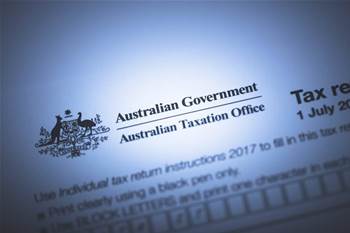The Australian Taxation Office (ATO) wants to be “fully digitised” by 2030, with a large portion of the unreleased strategy dedicated to becoming “real-time” - from reporting to payment.
Commissioner Chris Jordan told the Xerocon Sydney conference last week that the ATO’s executive group had “endorsed a new digital strategy” at the end of August.
The strategy puts a 2030 target on becoming fully digitised, and is underpinned by five key principles.
“We are still some time away from sharing the full strategy externally,” Jordan said, while offering a “glimpse behind the curtains” to Xerocon’s audience.
The principles have a heavy focus on real-time processing and reuse, both at the backend and in the taxpayer world.
Jordan said the ATO “want(s) businesses and their representatives to be able to interact with us through the software or tools they are already using to run their business and manage their finances.”
“When we build reporting and payment mechanisms into the systems people already use, we are making it easier and simpler for them to comply,” he said.
The ATO’s direction for 2030 is aligned to the OECD’s Tax Administration 3.0 vision, which was laid out in 2020 and includes a digital maturity model.
For the ATO, that will lead to a digital ecosystem “where seamless, integrated, and automated systems allow data to flow from the systems taxpayers already use, to ours, without any extra effort or intervention from them.”
“Tax 3.0 is our ‘North Star’ - where reporting, payment and real-time compliance checks coincide with the taxable event,” Jordan said.
“The closer we get to real-time, event-based reporting and payment, there is more certainty and less burden for everyone.”
Real-time reporting, he said, could mean an end to “monthly or quarterly GST reporting” as well as potentially “a BAS-free future”, he said, referencing the frequent tax statement reports that businesses have to file.
“We’re dreaming big, but this is the essence of Tax Admin 3.0,” he said.
Jordan said the ATO would carry “a transformation mindset” into the execution of the digital strategy.
It will also follow many large private sector businesses in focusing on “reuse” of existing systems and capabilities, where possible, suggesting a future standardisation effort.
Jordan also said that “integrity” - largely security, anti-fraud measures and resiliency - would be designed into taxation reporting and collection procedures.
He added that the design of systems would put users at the centre, instead of the ATO.
“Once upon a time, the ATO thought it was the centre of the tax universe,” he said.
“We would set a course and everyone would have no choice but to follow our lead.
“But today we know better. We view ourselves as just one part of a very big tax ecosystem, and we know the key to creating optimal digital experiences is co-design.”


.png&h=140&w=231&c=1&s=0)























